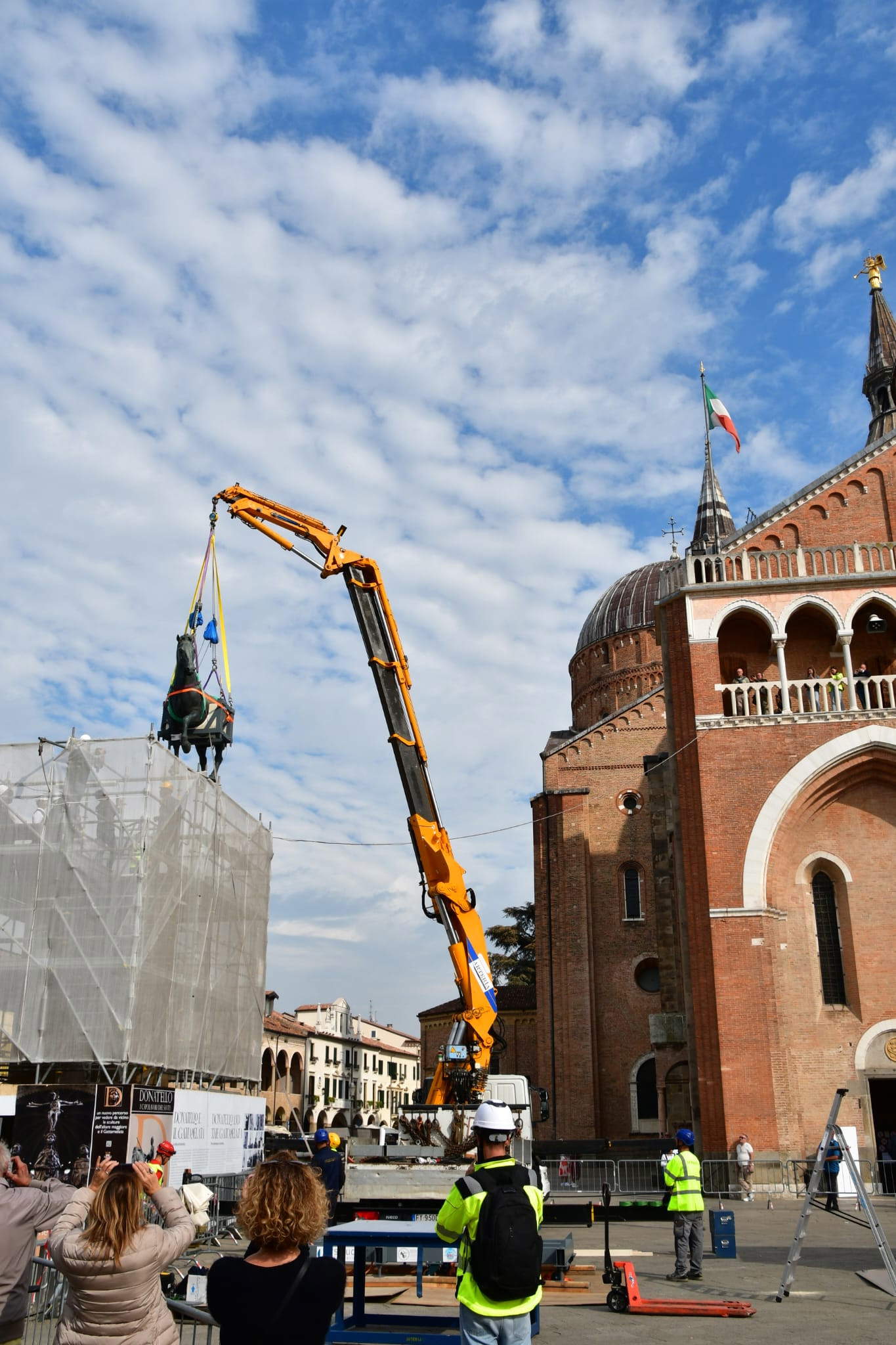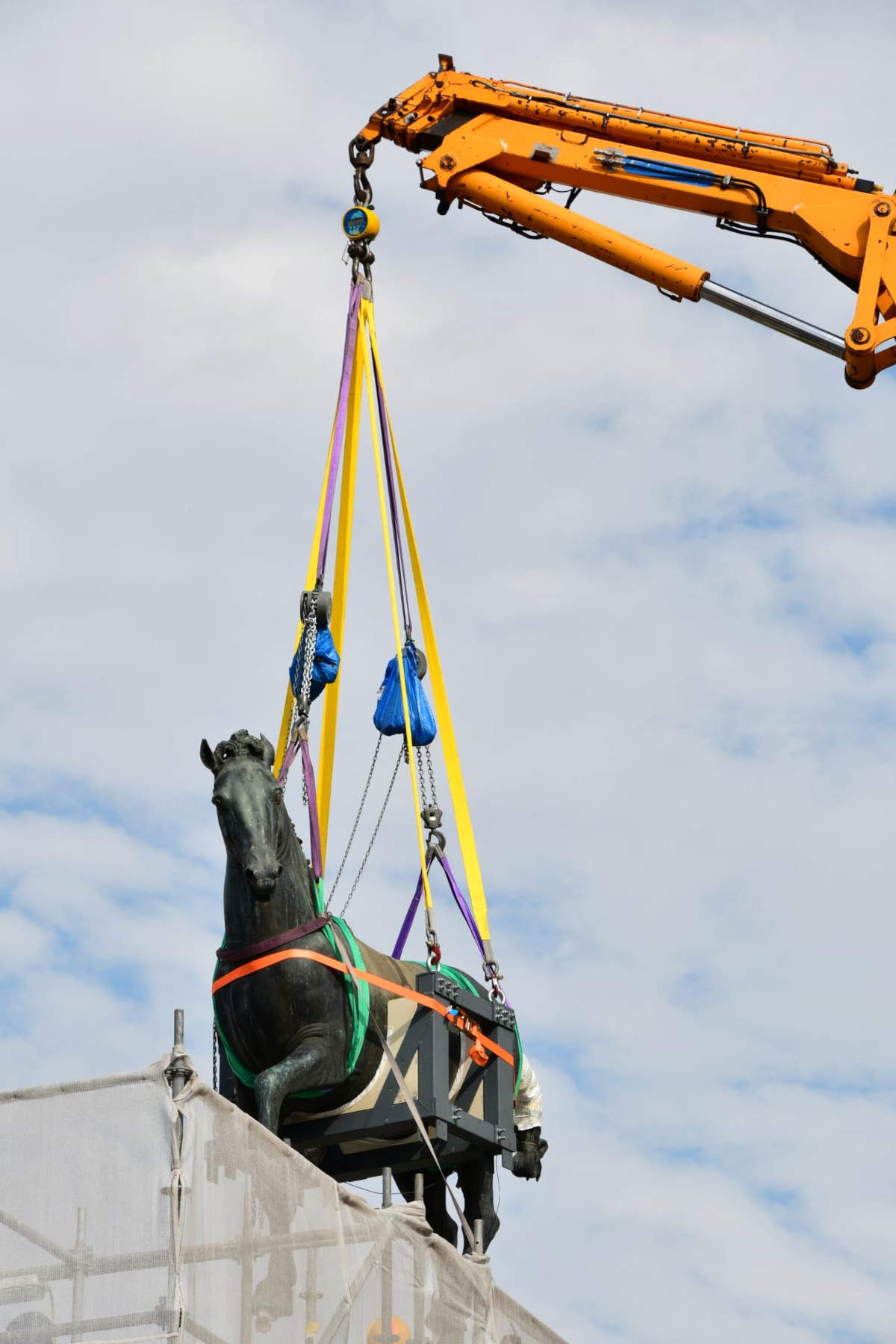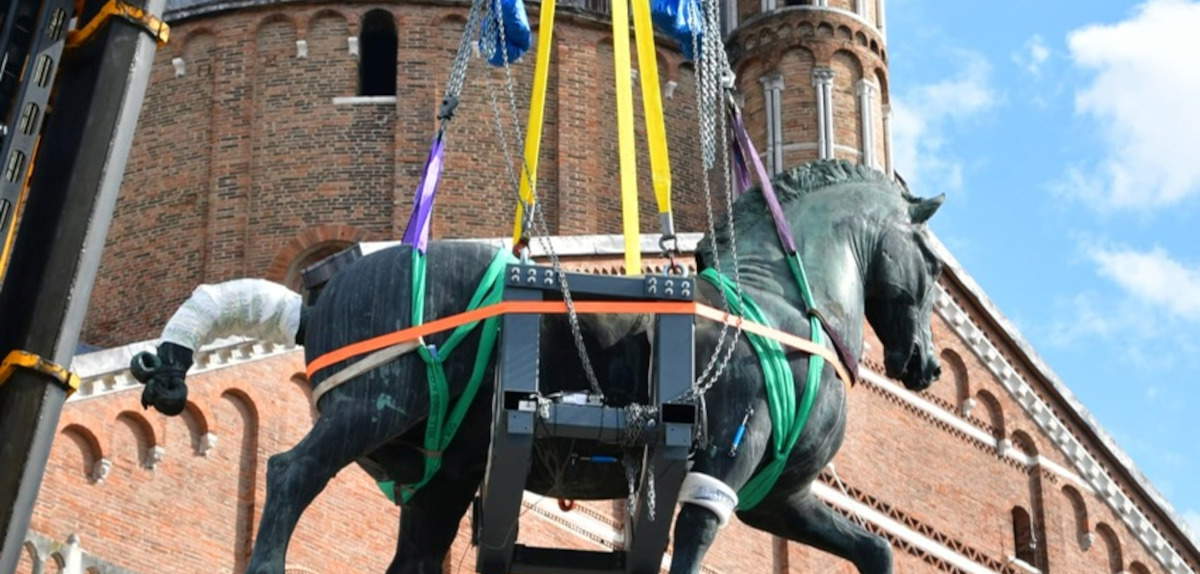Yesterday, Wednesday, Oct. 8, the complex handling operations of the famous Equestrian Monument to Gattamelata by Donatello, a Renaissance masterpiece placed on the parvis of the Basilica of St. Anthony in Padua, began. After the descent of Erasmo da Narni known as the Gattamelata, which took place relatively quickly, it was today, Thursday, Oct. 9, the turn of his mighty horse, the protagonist of a long and delicate operation that ended at 2:38 p.m.
The horse also left its stand to rejoin its rider, who had been waiting for it since yesterday in the hallway of the nearby former “Boito” Civic Museum. Immediately after the descent and displacement of the warrior, preparatory work was started on the “detachment” of the steed from the plinth, which is also in need of important and urgent restoration.
The complex and delicate descent operations were carried out under conditions of full safety and stability, thanks to the work of engineers Filippo Casarin and Marco Mocellini of R-Struct Engineering, under the supervision of Roberto Ciabattoni of the Central Institute for Restoration and the direction of restorer Nicola Salvioli. The most delicate phases of handling were taken care of by Arterìa of Florence, in the presence of Monica Pregnolato of the Soprintendenza. The horse, whose weight was estimated at about 1,600 kilograms, was detached from the stone base and transferred to the nearby Civic Museum in the late afternoon, at the end of complex anchoring and transport operations. During all phases of the move, the monument was constantly monitored by technicians from the Expin company in Padua, ensuring maximum structural protection.
The move of the entire bronze group, consisting of 36 elements, was necessary to allow for preliminary restoration assessments, which were carried out thanks to the support of the American nonprofit organizations Friends of Florence and Save Venice, which will continue to support the subsequent phase of conservation work as well.



These two days, destined to go down in the monument’s history, mark the third “descent” of the bronze group from its original base since the 15th century. The first occurred in November 1917, when the work was moved to Palazzo Venezia in Rome for protection during World War I, returning to the parvis in July 1919. The second descent was on October 1, 1940, at the beginning of World War II, when the group was dismantled and kept at the Abbey of Carceri d’Este (Padua) until June 6, 1945. Made by Donatello between 1447 and 1453, the monument was commissioned by the family of Erasmo da Narni with the approval of the Senate of the Venetian Republic, to celebrate the valor and memory of the famous condottiere. Only a few years later, the equestrian statue found its final location in front of the Basilica del Santo.
“The legs of the horse rested on iron pins - probably made during the descent during the Second War -, firmly attached to the stone base. It was therefore necessary to cut them off in order to free the horse statue from the also ”Donatellian“ basement, an element that beyond its apparent solidity hides a certain internal weakness. Therefore, in this overall restoration of the work, there is also an intervention of consolidation of the stone structure that until now has supported the bronzes, knight and horse,” said architect Ugo Soragni, Scientific Director.
“Now that the horseman and horse are at the former ”Boito“ Civic Museum, it will take a few months to complete all the work of investigation and interpretation of the results. After that we will take stock of the situation by putting together the results of the analyses carried out externally until now, with those of the new studies. And only then will it be possible to draw up the actual intervention program that will have to be approved by the Superintendence,” he concluded.
In the pictures, some images of the stages of dismantling the horse from the equestrian statue of Gattamelata. Photo by Gianni Berno.
 |
| Padua, dismantling of the Gattamelata monument has begun. Yesterday the descent of the condottiero, today of the horse |
Warning: the translation into English of the original Italian article was created using automatic tools. We undertake to review all articles, but we do not guarantee the total absence of inaccuracies in the translation due to the program. You can find the original by clicking on the ITA button. If you find any mistake,please contact us.